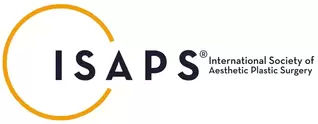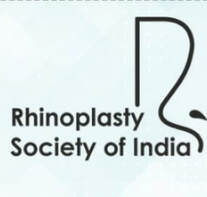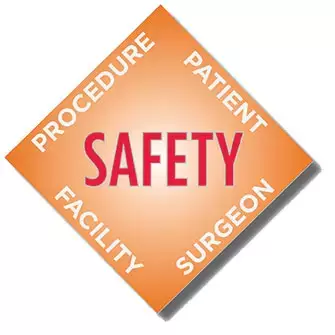|
Do I have gynecomastia?
'I don't know if I have gynecomastia. Maybe it is fat. So, I came.' I hear this often in my practice. Gynecomastia is male breast enlargement. It can be diagnosed easily because of its appearance. But sometimes, the presentation can be a bit confusing. The breast tissue is seen under the nipple and areola. The areola is the pigmented skin immediately surrounding the nipple. Depending on the severity of enlargement, gynecomastia can present as puffiness of the nipple and areola, or it can extend towards the sides of the chest. It can affect one side or both sides. Both sides can look different. In other words, there can be asymmetry. The word, ‘gynecomastia’ comes from ‘gyneco’ and 'mastia'. 'Gyneco' means female, and ‘mastia’ means breast. Thus gynecomastia translates into the female-looking breast. This occurs due to an enlargement of the breast tissue. Compared to female breasts, male breasts are positioned more laterally (meaning to the side of the chest). Hence, the deformity of gynecomastia is also especially pronounced when viewed from the side. Hypertrophy of the underlying muscle (pectoralis major) looks different from that of the breast. The muscle animates (moves) in certain maneuvers. This means the muscle contracts during certain activities like flexing the arm against resistance. Also, the lower border of the muscle usually stops at the level of the nipple. Any enlargement that significantly extends below the level of the areola is usually due to breast tissue. The lower border of the muscle is straight or flat. This is easily made out in men who perform weight training. The presence of breast tissue tends to make the inferior border curved. The curved lower part of the breast gives it a feminine appearance. It is also possible to pinch the breast tissue separately from the underlying tissues. We usually carry this out during a clinical examination of an individual presenting with gynecomastia. Puffiness of the nipple and areola is also associated with enlargement of the breast tissue. It is not associated with hypertrophy of the underlying muscle. There is an entity called pseudogynecomastia. ‘Pseudo’ means false. This is due to increased fat deposits in the chest. There is no glandular enlargement in pseudogynecomastia. It is usually seen in the setting of obesity with fat deposits that mimic the appearance of male breast enlargement. Losing weight will lead to an improvement in the deformity associated with pseudogynecomastia. It is usually simple to diagnose a case of gynecomastia during a clinical examination. We sometimes request additional investigations to look for any underlying cause for gynecomastia. Imaging can help us to confirm the condition. Most cases of gynecomastia are benign and are self-limiting. Surgery is undertaken when gynecomastia results in significant distress in the affected individual. To learn more about gynecomastia, please visit, https://www.amicusclinic.in/gynecomastia Recently I was asked about home remedies for scars. I usually don't suggest any. Some of my patients describe the benefits of certain types of oils. I do not promote or recommend the use of any particular type of medication on settled scars. Also, I do not caution them against the use of any particular oil.
But there is a definitive role of certain conservative measures that can help improve scars. They are not advised in all cases. The effect of these measures should be understood by those using these. They should be carried out as per the guidance of the treating doctor. Some of the commonly advised measures for scars include the following,
Certain other non-surgical measures are carried out to help improve a scar. Examples would include laser and intralesional injections. But these are carried out by a doctor. Even though home remedies may not have many roles for optimizing scars, certain conservative measures are frequently advised. Most of them help in scar remodeling. Rhinoplasty is a commonly known plastic surgery procedure to improve the appearance and function of the nose. The function of the nose relates to breathing. As in all surgical procedures, complications can happen. The goal of preoperative evaluation is also to seek out any potential problem. But despite the best efforts, complications can occur.
The incidence of the complications varies. It can vary depending on the type of procedure, and patient factors. It is more common to have a greater incidence of complications in difficult (challenging) cases. Some of the complications are uncommon when compared to others. The complications can be seen under those that are nonspecific to rhinoplasty and those specific to rhinoplasty. The nonspecific complications can occur in any surgical procedure. It need not be in rhinoplasty alone. These include,
The specific complications of rhinoplasty are those related to aesthetic (appearance) and functional (breathing). The aesthetic complications include,
Functional problems associated with rhinoplasty include,
Some of the complications are more serious when compared to others. Also, the difficulty level in performing a rhinoplasty can vary depending on the presentation. It is also more so in previously operated noses. It is not possible to eliminate the possibility of complications. However, it is usually possible to reduce their incidence with careful planning and attention to detail. For more details about rhinoplasty, visit here. Beauty is associated with proportions. A body part that is disproportionate to the rest of the body can impair appearance. An example would be women with arms that are large when compared to the torso. It is a common aesthetic concern in plastic surgery practice.
Arms are tubular structures. They consist of soft tissues around a bone. The soft tissues are made up of structures like fat, muscles, and vessels. It is surrounded by skin. Large arms usually involve a relative excess of fat and skin. The fat occupies the layer deeper to the skin. As the volume of fat increases, the overlying skin stretches to adjust to the increased volume. Hence, a reduction in the size of the arms involves a reduction in the size of the fat and skin excess. We can achieve this through surgical, and non-surgical techniques. Why do some individuals get big arms? The increase in the size of the arms is associated with excess weight. This excess fat gets deposited in various areas of the body. Some of us tend to deposit this fat more in our arms. This intrinsic tendency varies from one individual to another. Other conditions can be associated with an increased size of the arms, lymphedema, soft tissue swellings, etc. But they are relatively less common causes of big arms. This article deals with the management of the arms as a result of excess fatty tissue. What can be done to improve the appearance? A reduction in the size of arms has to address the two types of tissues involved, namely fatty tissue and skin. First, the fat. Fat occupies the area between the muscles and skin. The amount of fatty tissue correlates with the amount that can be rolled between two fingers. Fat is amenable to dietary modifications. A reduction in body weight usually leads to a reduction in the amount of fatty tissue and a resulting in a decrease in the size of arms. Liposuction is a surgical technique to remove the fatty tissue with the help of small tubes (cannula). It is useful for individuals with fatty tissue that is resistant to dietary modifications. A good candidate for liposuction is someone with close to ideal body weight. Liposuction does not directly address the excess skin. Next, the skin. The skin stretches to accommodate the excess fatty tissue. Once there is a reduction in the fatty tissue with diet or liposuction, there is a recoil of this skin. Recoil is the shrinking of the skin to a smaller area. However, this recoil of the skin takes time. It can take as much as a year for the skin to maximally recoil. In cases of massive weight loss, the recoil can be incomplete. This is seen as a persistent loose fold(s) of the skin. It is usually seen on the undersurface of the arms. Skin recoil is also reduced with advancing age and in smoking. Brachioplasty is a surgical procedure to remove excess skin. During brachioplasty, skin is removed as an ellipse from the medial surface (inside) of the arm. This is the part of the skin that abuts the torso. The decision to undertake a brachioplasty is taken after waiting for the skin to maximally recoil. Hence, it is usually not carried out during liposuction. The extent of skin removal is customized depending upon the extent of skin excess. Brachioplasty helps in improving the contour by removing the loose skin folds. What are the advantages of the management of this condition? It helps in improving the appearance of the arms in individuals with disproportionately large arms. The role of diet and exercise play a very important role in the appearance of the arms. Liposuction and brachioplasty are two surgical procedures that help to further optimize the appearance of arms. Gynecomastia is an enlargement of the male breast. It is a common condition. Surgical correction of gynecomastia achieves a reduction in the excess breast tissue. A reduction in the breast tissue helps improve the aesthetics of the male chest. In most cases, surgery involves liposuction and gland excision. Liposuction addresses fat, and direct removal addresses the gland. These two steps are usually adequate for most individuals with gynecomastia. However, this may be insufficient to restore the aesthetics in those with excess skin. They may require additional treatments.
The stretched-out skin usually recoils adequately after reduction in most of the individual. The problem relating to excess skin is observed commonly in two subsets of patients. They are,
How do we manage excess skin while treating gynecomastia? The treatment approach depends on the presentation. We tend to follow a conservative wait and watch in younger individuals, and those with a less severe presentation. This is because of better skin recoil in younger individuals. Also, the removal of the gland will reduce the effect of the weight on the skin. This helps the skin to recoil better. It is common practice to wait for more than ten months to assess the full extent of skin recoil. Any secondary corrections are done after this period. The conservative approach may not help in older individuals and those with severe forms of excess. In such cases, we may opt to add a skin removal procedure during the management of gynecomastia. Good candidates for primary correction of the skin would include nonsmokers. They must have a stable weight. Skin removal procedures in those with unstable weight may result in suboptimal outcomes. The design of the skin excess is variable. This is based on the extent of skin excess and patient preferences. A circumareolar (around the areola) approach is preferred in milder cases. In individuals with severe excess, we prefer extensile (long) incisions with the grafting of the nipple and areola. Needless to say, individuals with longer incisions have longer scars. What is the advantage of staging a skin removal procedure? In other words, why wait between a gynecomastia correction and a skin excisional procedure. Skin can recoil significantly with time. It may not be able to predict the full extent. Adequately recoiled skin results in acceptable aesthetics. The full extent of skin recoil after gynecomastia correction takes time. Avoiding a skin removal procedure means lesser scars. However, this approach may not be suitable in those with severe forms of skin excess. Are there any approaches to prevent this issue with excess skin? They would include the following. Avoiding excess body weight. The excess skin problem is not common in individuals with normal or ideal body weight. Early treatment of gynecomastia. The ability of the skin to recoil reduces with age. Smoking is bad for skin recoil. Nonsmokers tend to have better outcomes when compared to smokers. What is the advantage of managing the excess skin in individuals with gynecomastia? It leads to better aesthetic outcomes. For more information about gynecomastia please visit here. Should one lose excess weight before a body contouring surgery? Or should it be postponed to sometime after the surgery? Many of the patients I come across seem to have this dilemma. It is common for individuals to delay losing any excess weight until after the surgery.
Does it make any difference if the excess weight is reduced before or after liposuction? It does make a difference. It is better to lose excess weight before rather than after the surgery. This is best achieved with a healthy lifestyle. Both exercise and adequate diet play an important role. What are the reasons? A few of them would be as follows,
Hence, it is better to bring the bodyweight close to ideal before undergoing a fat reduction procedure. Liposuction or lipoplasty can then help target resistant fat. To summarise, should one lose excess weight before a body contouring procedure? Yes. It has its benefits. Ideally, weight loss is attained using sustainable lifestyle modifications. It is associated with better outcomes and lesser complications. They continue to reap the benefits of the procedure long after the surgery. ClicA cyst refers to a bag like swelling. Epidermoid cysts are among the most common skin swellings found in the human body. They are not life-threatening nor do they spread to another part of the body. These cysts are formed when the cells of the outer layers of the skin get trapped deep within. When this happens, the cells instead of getting shed outside the body organize themselves into a bag like swelling. Even though benign, an epidermoid cyst can be troublesome.
How does an epidermoid cyst look? An epidermoid cyst usually presents as a skin lump. The overlying skin is usually unremarkable except for a small area of discoloration due to a punctum. Usually, a sebaceous cyst is not painful. However, once in a while they can get inflamed. And during inflammation, the cyst becomes painful to touch. The size of a sebaceous cyst can vary. Why do we remove an epidermoid cyst? It is usually removed for the following reasons:
How are epidermoid cysts removed? An epidermoid cyst is usually removed under local anesthesia as an outpatient procedure. It does not require an inpatient stay. The swelling is removed with a small ellipse of the skin that contains the punctum. The wound is closed with the help of a few sutures. A modified approach involves the avulsion of the cyst wall through a small incision. This may be suitable for some individuals. In most cases, individuals have an uneventful recovery. Liposuction is among the more popular procedures done by a plastic surgeon. Liposuction is carried out as a single procedure or in combination with other surgical procedures. Some individuals refer to it as the 'keyhole' surgery for gynecomastia.
Liposuction has certain advantages over open or conventional surgery. These include small incisions, faster recovery, and less postoperative discomfort. Liposuction can be carried out both under general or local anesthesia. Doing liposuction under local anesthesia has certain benefits. So, what are these benefits? The important ones include,
Are there any differences in technique with liposuction under local anesthesia? There are a few differences. Firstly, the patient is awake, and the monitoring of the patient is simple. When done in an awake patient, it takes longer to complete the procedure. There are a few reasons for this. The initial infiltration of the anesthetic solution in the treatment areas is done in multiple steps and takes longer to complete. Also, we prefer the use of smaller cannulas for infiltration and fat aspiration (suction). We usually use cannulas of sizes 3 mm or below in an awake individual. Due to the smaller cannulas, the aspiration of fat takes more time to complete. Liposuction in the awake individual is more gentle. Who is the right candidate for liposuction under local anesthesia? Almost all candidates for the procedure under general anesthesia are also good candidates for the procedure to be carried out under local anesthesia. However, if the patient is very anxious or has a fear of needles they may not be a good candidate for local anesthesia alone. Such individuals would be better suited for general anesthesia. To summarize liposuction, in awake patients has a better safety profile. It has the added benefits of a faster recovery, and this also makes it suitable as an outpatient procedure. For more information about liposuction click here. Pressure sores tend to occur in bedridden individuals. It is more common among the elderly, though persons of any age can get affected. Pressure sores could be as a result of spinal injury or any prolonged debilitating illness. It is a cause of increased stress in the affected individual and caregivers. It results in increased medical expenses.
Proper care can help us reduce the incidence (prevent) and achieve early healing of pressure sores. The following three aspects form an important part of care among individuals at risk of developing a pressure sore:
The onset of a skin breakdown must be viewed seriously. It may not be possible to eliminate all of the risk factors that can lead to a pressure sore. However, with adequate care, it is possible to prevent this condition. You can learn more about pressure sores here. Removal of small skin swellings is common in our practice. Patients usually get them removed for the following two reasons,
In most cases, removal of the swelling is a simple and straightforward procedure. It is usually carried out under local anesthesia in adults. Patients usually go home after the procedure and follow up as an outpatient for inspection of the wound and suture removal. In case a biopsy was done, the case is reviewed once again after the biopsy report. One of the reasons why patients come to a plastic surgeon is due to the concerns relating to the postoperative scars. In other situations, the referrals are due to the relative difficulty in obtaining closure in regions such as folds near the eyes, mouth, or nose. In the majority of cases, we remove the swelling with a small margin of skin. This can vary based on the type of swelling. Some of them mandate a narrow margin while others require a wider margin. This is based on clinical presentation. Additional pre-operative investigations may be ordered in some cases. The removal of swellings consists of two parts. First is the removal, resulting in a wound. And the second is the closure wherein the tissues are approximated to achieve optimal healing. In most cases, the second part is done with a straight line closure. However, this may not be possible in certain situations. This may be due to wide separation between the wound edges, or proximity to regions such as eyes, nose, or mouth. In such situations, we resort to techniques such as skin grafts or flaps. We make intelligent use of neighboring or distant tissues to effect good closure. Some of the swellings may not arise from the skin. They may originate from other structures like fat. Removal of such swellings gives us some liberty concerning the placement of the surgical wounds. Some orientation of the surgical scars may be associated with a better outcome compared to others. Knowledge about the orientation of optimal incision lines helps us give a better looking postoperative scar. Removal of these swellings is associated with a good outcome in most individuals. A small subset of individuals tends to have problem scars. It is usually possible to predict the scarring tendency of an individual by observing previous scars on the body. Two possible adverse outcomes related to the tendency for stretched out scars and hypertrophic scars. Though scar hypertrophy can be treated, patients need to be aware of such a possibility. Removal of skin swellings is a minor and safe surgical procedure with very little downtime. With good technique, it is possible to get good outcomes in most individuals. For more information on skin procedures, click here. |
AuthorI like to keep it simple. CategoriesArchives
March 2024
Categories |
- Home
-
Cosmetic
- Fat grafting
- Swellings and moles
- Scar revision
- Leukoderma (Melanocyte transfer)
- Hair transplant
- Facial rejuvenation procedures
- Nose job (Rhinoplasty)
- Cleft lip nose correction
- Ear (Otoplasty)
- Lip reduction
- Breast augmentation
- Breast reduction
- Tuberous breasts
- Axillary breasts
- Gynecomastia
- Liposuction
- Brachioplasty (Arm contouring)
- Abdominoplasty (Tummy tuck)
- Female genital rejuvenation
-
Reconstructive
- Contact
- Blog
- Home
-
Cosmetic
- Fat grafting
- Swellings and moles
- Scar revision
- Leukoderma (Melanocyte transfer)
- Hair transplant
- Facial rejuvenation procedures
- Nose job (Rhinoplasty)
- Cleft lip nose correction
- Ear (Otoplasty)
- Lip reduction
- Breast augmentation
- Breast reduction
- Tuberous breasts
- Axillary breasts
- Gynecomastia
- Liposuction
- Brachioplasty (Arm contouring)
- Abdominoplasty (Tummy tuck)
- Female genital rejuvenation
-
Reconstructive
- Contact
- Blog
You can leave us a comment using the contact form below.
We shall get back to you at the earliest.
We shall get back to you at the earliest.
Links
- Face procedures | Rhinoplasty, Otoplasty, Lip reduction, Fat grafting
- Body procedures | Gynecomastia , Breast reduction, Abdominoplasty, Brachioplasty, Liposuction
- Skin procedures | Scar revision, Moles, Leukoderma surgery
Let's be friends !
Follow us at Facebook and Twitter.
Follow us at Facebook and Twitter.
Vectors designed by Freepik
© 2024 Amicus Clinic (Plastic Surgery Centre, Trivandrum). All rights reserved.
© 2024 Amicus Clinic (Plastic Surgery Centre, Trivandrum). All rights reserved.

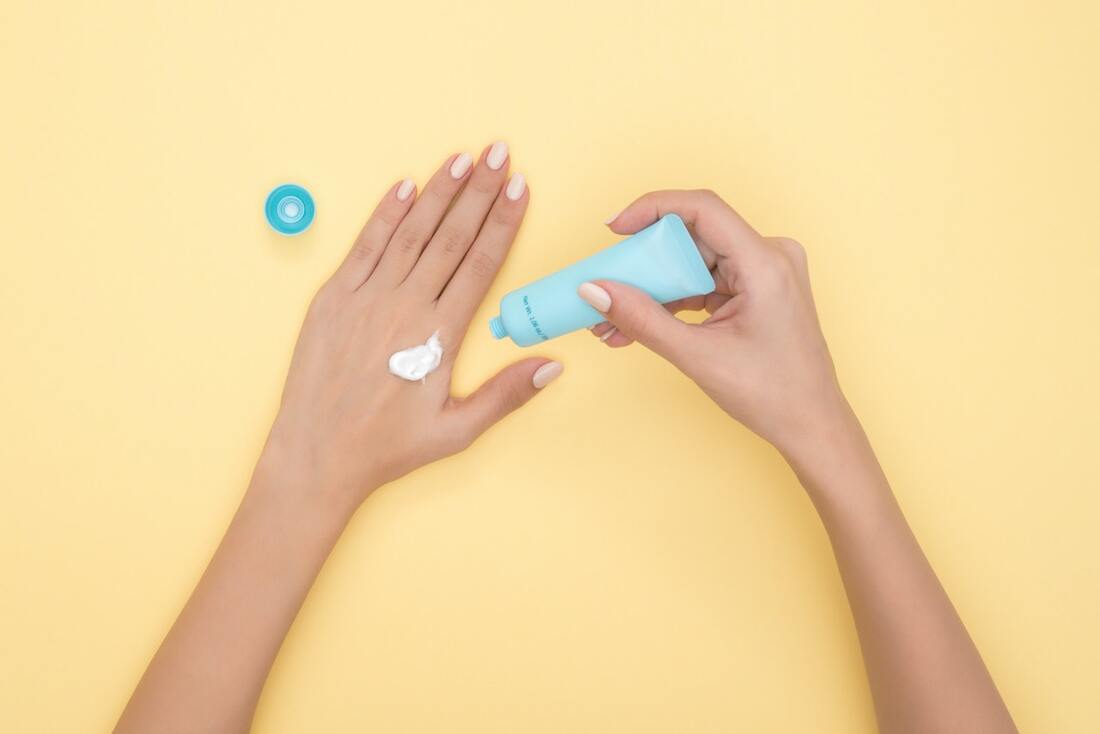
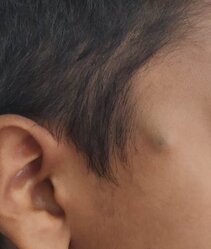
 RSS Feed
RSS Feed
